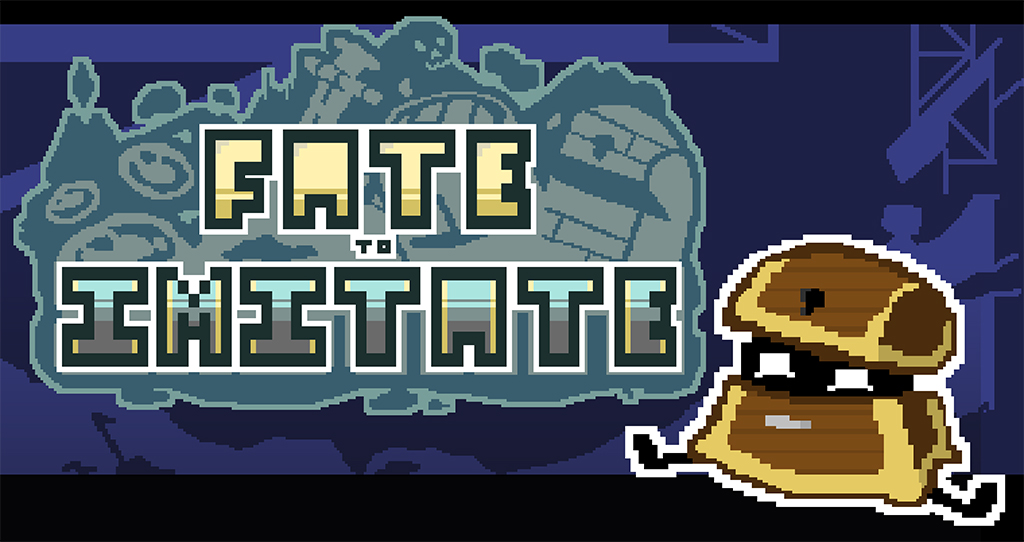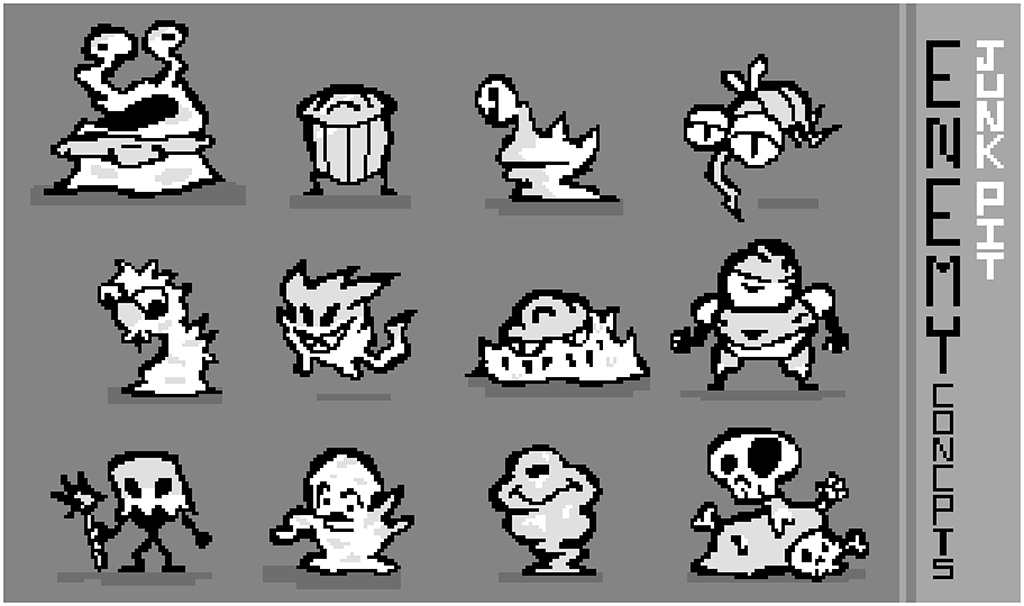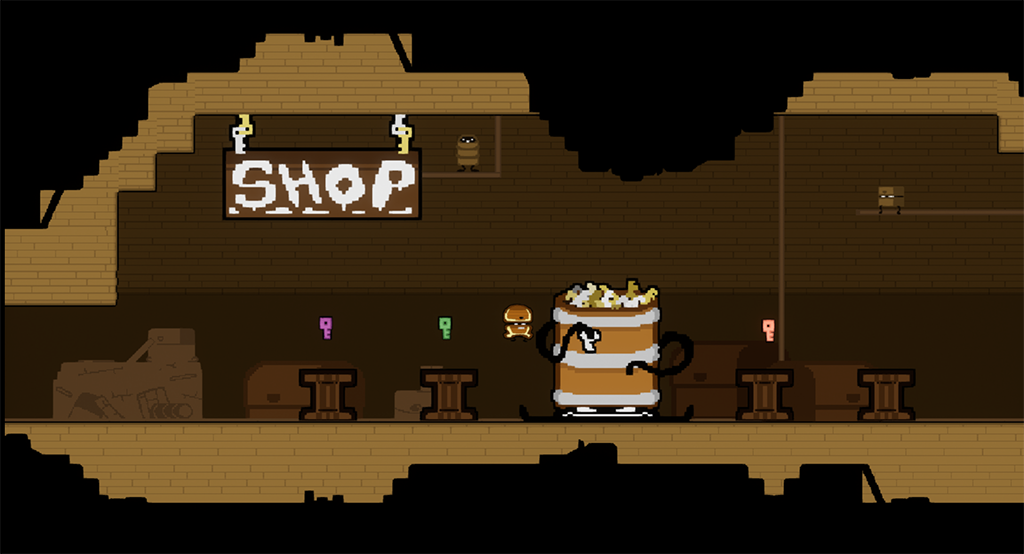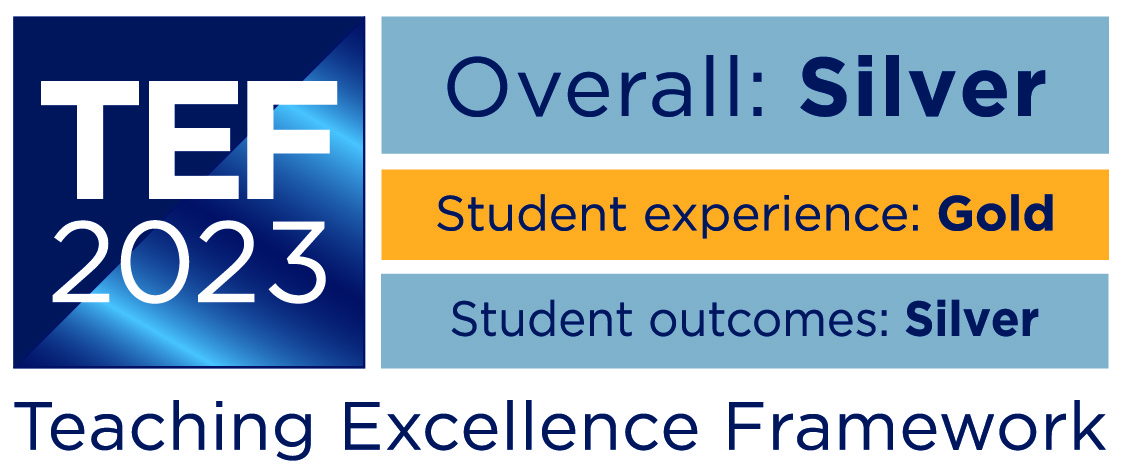This website uses cookies so that we can provide you with the best user experience possible. Cookie information is stored in your browser and performs functions such as recognising you when you return to our website and helping our team to understand which sections of the website you find most interesting and useful. For full details on the cookies used on our website, please visit our Cookies Policy page.
Following a successful final degree show, we caught up with Susie Connaughton, a recent Games Design graduate, to chat about her passion for gaming, game design, and ‘Fate to Imitate,’ her remarkable retro platformer and honours project built in Unreal Engine 5.
Susie, where did your love of gaming first start?
“My first experience with computer games was not a games console but a Nintendo DS, playing games such as Mario, Castlevania, Metroid, loads of games. I was hooked, not just on the games but the way they were constructed fascinated me, and that’s when I fell down the gaming and design rabbit hole, which eventually led me to Futureworks.”
What’s your experience been learning at Futureworks for the last three years?
“Great! I’ve learned a lot, and it’s helped me tremendously. I’ve had a lot of time to really understand games design, discover what I’m good at and hone in on the specific things that help to shape my work. Also, I had some experience of games development but none using Unreal Engine, but after three years at Futureworks I feel like I’m really experienced, especially using Unreal. The course and the tutors have been great, I’ve really enjoyed it.”
What do you put your experience with Unreal Engine down to? Is it Futureworks teaching, your own investment or a bit of both?
“I’d say it’s definitely both, and especially in the second year of my Games Design degree. My Tutor, Elliott Thewliss, was really enthusiastic about my work. We gelled well; you could tell he was genuinely excited about the game I was creating, which also made me excited. He gave me confidence and pushed and pushed me more to succeed.”
How would you describe your honours project game, Fate to Imitate?
“I like to describe is as a Metroidvania platformer. It plays like Mario, but with elements of Metroid and Castlevania, hence Metroidvania. What I mean by this is that the game’s not just a left or right-scrolling platformer; it’s not one-way, it is multi-directional and has gameplay elements found in both Metroid and Castlevania. It’s free to roam and you can explore more of the game’s environment than a standard platformer.”
“The game’s hero is named Mimic, a treasure chest guy, I just wanted to make a silly little character that was funny to look at and fun to animate along with a range of bad guys to put him up against.”
Where did that idea come from regarding the multi-directional aspect of the game?
“I’ve honed down toward that style of gaming, especially in years two to three of my course. I learned about a Japanese game design and storytelling method named Kishōtenketsu. Essentially, whenever a new challenge is presented to the game player, it’ll be displayed in a safe environment first which is perfect for platform games. This allows the player to fail without serious consequence, and then later, when the challenge appears again, the player is ready for a harder attempt. It’s a way to introduce a rise in the game’s difficulty without the player really noticing a significant change. This is something I’ve kept in mind when designing my multi-directional levels.”
So, does the Games Design course teach you many principles, such as Kishōtenketsu?
“Again, it’s fifty-fifty. You get taught the fundamentals of game design from the tutors, and you’re given a strong foundation to build on, but the rest of the work I’ve learned comes from me. It’s independent in that regard. I see it that the more you put into the course, the more you get more from it. I believe that if you put in more effort in, then you’re going to get more out basically.”
That’s a great attitude to have! You mentioned that Fate to Imitate was built using Unreal Engine. A 2D platform style game is not a game that I associate with Unreal Engine.
“Yeah, it hasn’t got great 2D support, but I used a plug-in to help me with the 2D element, and I had to use a lot of workarounds to achieve what you’d expect in a regular 2D engine, and it worked out. In year one, where everyone was getting excited about all the games they wanted to make, I decided I didn’t want to make a game that was insanely beautiful to the point that I didn’t have enough time to make the game. I stripped my ideas back and made a game that was simpler and very retro, so I could focus more on the game’s elements, levels and gameplay.”
How long did it take you to create?
“I’d say around 6 months. It was a heavy climb, especially in the first month. I have this method where I use a traffic light system, red is not done, green is done, amber, I’m working on it. I split my development into sections and worked out what each mechanic needed to be done before it was implemented into the game properly. I’d polish that first and make sure it’s finished before moving on to the next. That’s how most of the development cycle went, and then when it came to the end, that’s when further refinement really made the game pop!”
So, a very design-led approach to creating the game.
“Yeah, I had a development journal and every week I’d ask for feedback from tutors and then playtesters, that was a big thing, then I’d reflect on that feedback, and that’s what I’d use to guide me for the following week and for Fate to Imitate that was my process.”
Playtesters? Who was testing your game?
“Most of the time, it was fellow students in my class, but I also had students from year two play the game. Occasionally, I’d post in groups online asking for feedback because people are unbiased. People in my class would give biased feedback, and I wanted more criticism. Anna and Luke, tutors on the course, organised an event called North West Playtesters. I went in for that, and a bunch of random people played it and fed back, which was extremely helpful!”
“It was difficult at first receiving feedback, and it felt very harsh because this was my baby. However, as time went on, I learned receiving criticism was like a muscle. You have to train it to receive it well. When people tell me about the game, I have to get into their head and understand it from their perspective. They don’t know all the effort I’ve put into the game, and they shouldn’t have to; that’s unimportant. They’re just pointing out what’s broken or making suggestions. I’ve learnt to detach myself emotionally, embrace what they tell me, and adjust the game accordingly. It can be frustrating but equally rewarding. You have to critically think about the feedback you’re receiving and what makes it good so you can take apart the bits that make sense and apply them back into the game.”
At your degree show, you received some great feedback to Fate to Imitate
“Oh yeah! A guy at the show from the industry used to work for a developer named Splash Damage. Anyhow, he said that Fate to Imitate was the best student game he’d ever played, which was incredible feedback!”
At Futureworks, we talk about our creative community, and I wondered about the music on the game; who did you contact for music composition?
“I collaborated with another student, Ewan Heneghan, who’s also studying at Futureworks for a BSc in Game and Interactive Audio. It was perfect synergy; as part of his course, Ewan had to compose and produce a track for a game or a show. The fact that it was an original game, rather than composing over an existing game, really helped boost his work. It was a win for him and for me. All the music, everything is completely by Ewan and it works really, really well, I’m so grateful!”
So, Susie, what’s next?
“I’ve been building my portfolio and refining my CV, ready for job interviews. I’ll be applying for jobs, networking and getting myself out there.”
Fate to Imitate, are you planning on releasing it?
“I’ve got the game, as it stands, on a website called itch.io, but it’s not a good idea to develop the game further because it’ll take me away from investing my time in getting a job. I’ll use the game as a springboard to help me get a job, rather than the game be my job if that makes sense?”
It makes perfect sense, Susie. If you’re as enthusiastic and professional in interviews as you were today in our chat, then I’m sure that a games company will snap you up soon, and we wish you all the very best in your search for a creative career in game design!
You can play Susie’s game, Fate to Imitate, on Itch.io and view her portfolio on her website
As mentioned above, Susie is seeking employment in the games industry, and potential employers can contact her via email
Fate to Imitate composer and Futureworks student, Ewan Heneghan, can also be contacted via email
Visit our BA (Hons) Games Design course page to learn more about the course Susie recently graduated from, and visit our games design gallery to view more work by students on the course.






